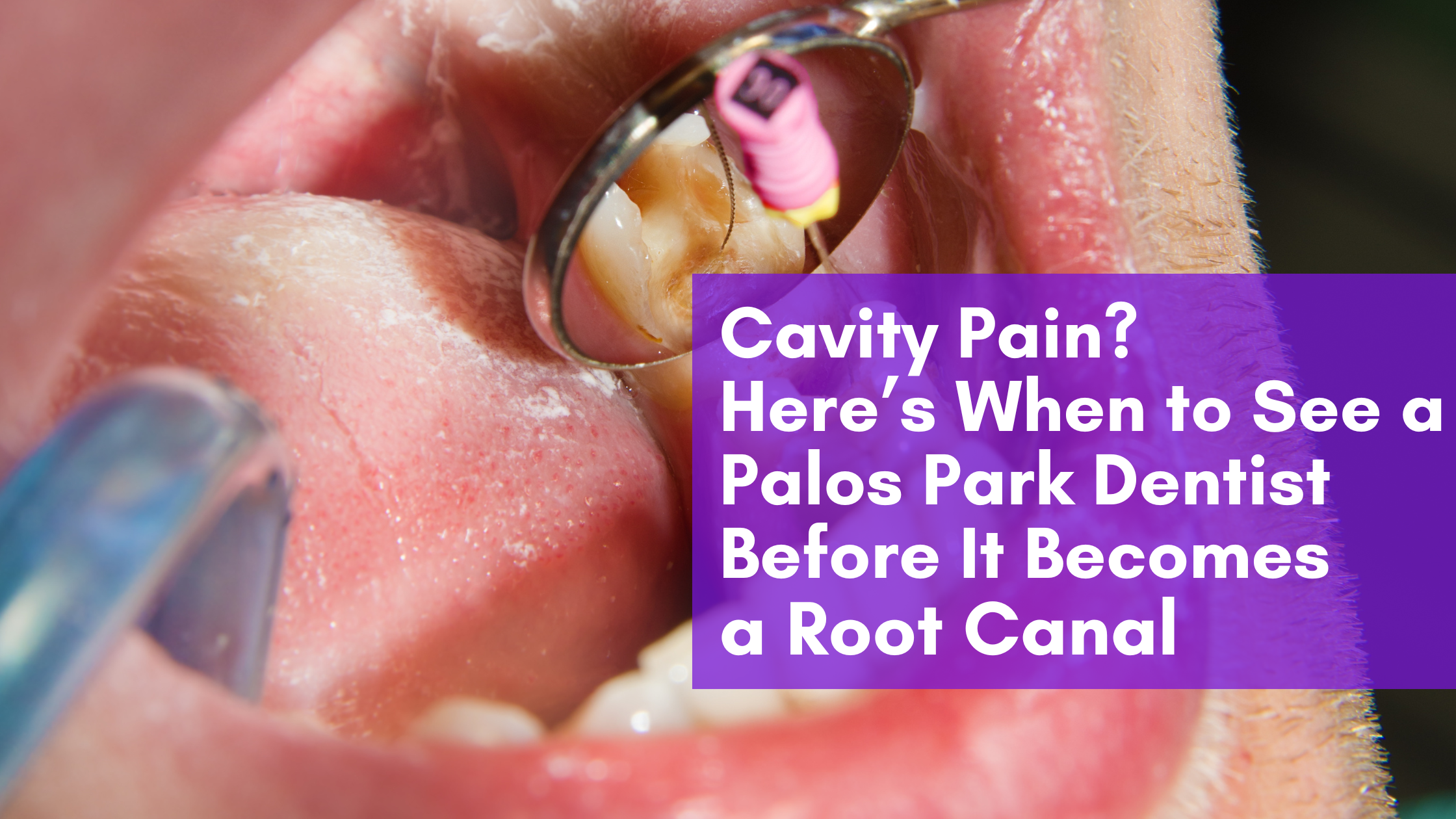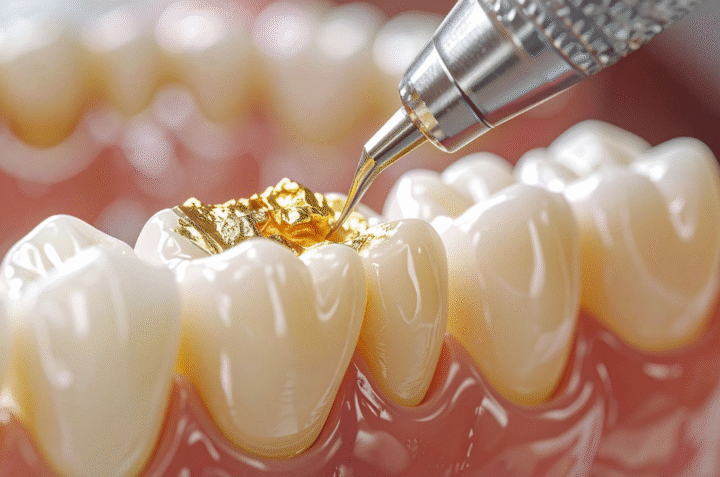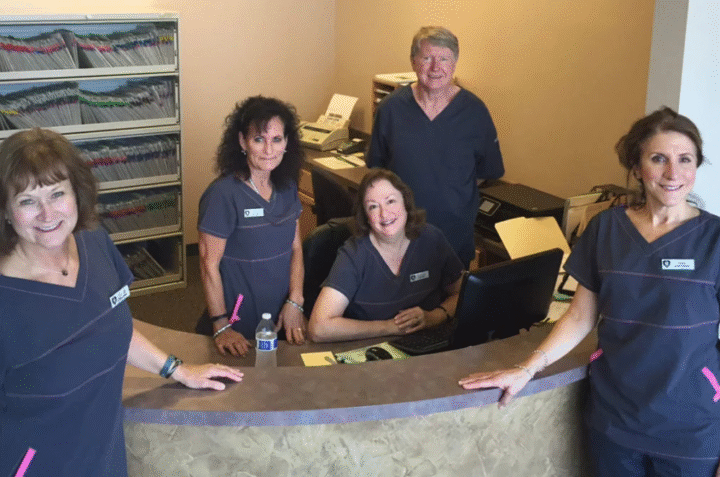Cavity Pain Vs. Tooth Decay: Understanding the Difference
Cavity pain turns into a root canal when the tooth decay has spread deep enough to reach your tooth’s nerve, causing sharp, throbbing pain.
How do you know it’s cavity pain vs when it’s not?
Cavity pain is quick and goes away immediately, while tooth decay lingers. Not only is it noticeably more painful, but it can even wake you up in the middle of the night.
If this sounds like where you’re at right now, this dental health guide is for you.
At Sheehan Dental, our Palos Park family dental clinic, we see this all the time: someone ignores “little” cavity pain, hoping it will fade, and then one day the pain is so bad that a root canal is the only way to save the tooth.
The good news? If you come in early for a dental checkup, a root canal may be avoided.
Worried Your Cavity Pain Might Turn Into a Root Canal?
“It hurts sometimes, but not that bad. Do I really need to see a dentist right now?”
That’s probably what you’re thinking, right?
Here’s the reality, backed by research:
- Cavities usually start with no symptoms at all (no pain or tooth sensitivity). As the decay grows, you may feel sensitivity to hot, cold, or sweets.
- When decay reaches the inner part of the tooth (the nerve/pulp), that’s when the deep, throbbing pain kicks in and root canal treatment is often needed. How does this happen? Snacking on sugary and acidic foods/drinks causes your teeth to decay faster.
>Before the decay spreads is when you want to see your local dentist.
What Cavity Pain Really Means
A cavity is a tiny hole caused by tooth decay.
Bacteria in your mouth feed on sugar, make acid, and slowly eat through the hard outer enamel of your tooth.
At first, you may feel nothing. Then, as the cavity gets deeper, you start to notice cavity pain.
Early cavity signs you might shrug off
According to sources like Mayo Clinic and Cleveland Clinic, early and moderate cavities often show up as:
- A dull ache that comes and goes
- Mild sensitivity to cold water or ice cream
- A small visible dark spot or pit on the tooth
- A quick, sharp twinge when you eat sweets
These symptoms are annoying, but they’re also a warning sign. At this stage, the treatment we use here at Sheehan Dental Palos Park is usually simpler: a dental filling sometimes with fluoride support, and no root canal.
Pain signals that mean “Call a Palos Park dentist now”
If you notice any of these, you should schedule a dental checkup at Sheehan Dental as soon as possible:
- Pain when you bite or chew
- Pain that lingers after hot or cold
- Swelling in the gums near the tooth
- Throbbing pain that wakes you at night
- A pimple-like bump on the gums (can signal an abscess)
These are classic signs that decay may have reached or irritated the nerve (pulp) of the tooth, a condition called pulpitis.
That’s when root canal treatment often becomes necessary to save the tooth.
Why Waiting on Cavity Pain Can Lead to a Root Canal
One of our patients at Sheehan Dental tried “waiting out” cavity pain.
The result? The cavity spread to his upper left back tooth and a root canal treatment was needed to prevent further damage.
Tooth decay doesn’t happen immediately, though. Cavity pain is just the start. But when you wait it out and neglect proper dental habits, this is what happens:
- Decay reaches deeper in your teeth.
The cavity moves from the outer enamel into the softer dentin and toward the nerve - The nerve becomes inflamed (pulpitis).
This inflammation causes sharp or throbbing pain. If it becomes irreversible, a simple dental filling can’t stop the inflamed area.
- Infection spreads beyond the root.
If left untreated, infection can move into the bone around the tooth and form an abscess, which is painful and can cause swelling.
- Enter root canal territory.
A root canal is needed when the inside of the tooth (pulp) is inflamed or infected due to deep decay, cracks, or repeated procedures.
Dental Health Check-Ups: “Wait and See” vs “Treat Now”
| If you… | What often happens | Risk |
| Ignore mild cavity pain | Decay keeps spreading silently | Higher chance of needing a root canal or extraction |
| Use only sensitive-tooth toothpaste | May mask symptoms but doesn’t remove decay | You feel better for a bit while damage continues underneath |
| Get a dental checkup early | A dentist treats the cavity while it’s small | Often fixed with a simple filling and less cost/time |
There’s also evidence that people often come in very late—after trying home fixes—once the nerve is already badly damaged and a root canal is the only option.
What Happens During Dental Cavity Checkups at Sheehan Dental in Palos Park
If you’re considering a dental checkup, here’s what to expect from our Palos Park clinic:
Step-by-step: Your visit to our family dental clinic
- Friendly welcome and quick forms
We confirm your health history, medications, and any pain you’re having. - Conversation about your cavity pain
You can describe when it hurts, what triggers it, and how long it’s been going on. - Gentle exam of your teeth and gums
Dr. Michael Sheean checks for soft spots, visible cavities, and areas that hurt when gently probed, as recommended by diagnostic guidelines. - X-rays if needed
X-rays show how deep the cavity is and whether it’s close to the nerve - Treatment options and timing
You’ll leave knowing:
- What your cavity looks like
- How urgent it is
- What it will take to fix it (filling, crown, or root canal)
If you’re nervous or haven’t been to the dentist in years, that’s perfectly okay. Sheehan Dental has built its reputation on gentle, family dentistry in Palos Park, Palos Heights, and Orland Park since 2001.
Cavity Treatment Options at Sheehan Dental (From Small Fix to Root Canal)
Since cavity pain can range from mild to severe, the dental treatment for each case varies.
Here’s how cavity treatment usually works, based on established guidance from groups like the American Dental Association.
1. Early decay
If the cavity is just starting and has not broken through the enamel:
- Fluoride treatments may help strengthen enamel.
- Your dentist tracks the area with regular dental checkups or biannual dental cleaning.
2. Small to medium cavities: fillings
Most people with cavity pain usually sit here.
- The decayed part of the tooth is removed.
- A dental filling (often tooth-colored) is placed to restore shape and function.
- You leave our family dental clinic the same day with the tooth sealed.
3. Large cavities: fillings or crowns
If a big chunk of tooth is missing or weak:
- A larger filling, inlay, or crown may be needed to protect it from cracking.
4. Deep decay or nerve damage: root canal
When the decay reaches the pulp and causes infection or severe inflammation, root canal treatment may be the only way to save the tooth.
- The infected or inflamed pulp is removed.
- The inside of the root is cleaned, disinfected, and sealed.
- A crown is often placed to protect the tooth.
If infection is severe or the tooth is badly broken, tooth extraction may be an alternative option, but the goal is always to save your natural tooth when possible.
Not Sure If You Should Call? Use Our Sheehan Dental Cavity Pain Checklist
If you answer “yes” to any of these, it’s time to book a dental appointment:
- Do you see a dark spot, chip, or hole in your tooth?
- Do you feel a sharp, throbbing pain when you bite or chew?
- Does one tooth hurt more than the others with hot, cold, or sweets?
- Does the pain last more than a few seconds after the trigger is gone?
- Have you tried sensitivity toothpaste or home fixes for more than a couple of weeks with no real relief?
If you’re on the fence, lean toward early. Dental research shows that catching decay early leads to simpler, less invasive treatment and better long-term outcomes.
Why Palos Park Families Choose Sheehan Dental for Cavity Pain
There are plenty of dentists between Palos Park, Palos Heights, and Orland Park. But here’s why Sheehan Dental has been a trusted family dental clinic for decades:
1. Family and Pediatric Dental Clinic Since 2001
Dr. F. Michael Sheehan has been serving the community since 2001, treating everyone from young kids to seniors in one place.
That means:
- One family dental clinic for checkups, fillings, and root canals
- A team used to helping nervous patients and kids
- Evening and Saturday hours for busy families
2. Patient-Centered Approach With Customized Dental Treatment Plans
The core service at Sheehan Dental’s is our patient-centered approach. We take the time to get to know each of our patients personally, understanding their dental goals and needs because that’s how cavities get caught early, before they cause big problems.
3. Convenient Palos Park location
Our office sits on the border of Palos Park and Palos Heights, near the southeast corner of College Drive and Route 7, at 11901 S 80th Ave, Suite D, Palos Park, IL 60464.
So if you’re coming from Lake Katherine, Swallow Cliff, or nearby neighborhoods, you’re just a short drive away.
FAQs About Cavity Pain, Dental Checkups, and Root Canals
1. Can cavity pain go away on its own?
Sometimes the pain may go away for a while, especially if you avoid chewing on that side or switch toothpaste.
But that doesn’t mean the cavity is gone. Ignoring cavity (even with the right dental habits) doesn’t eliminate cavity. Decay does not heal itself. The evidence is clear: untreated cavities keep progressing and can lead to serious infection.
2. Does cavity pain always mean I’ll need a root canal?
No, cavity pain doesn’t always lead to a root canal.
If you come in while the cavity is still in the outer layers of the tooth, a filling is usually enough. Root canals are typically needed when the decay reaches the pulp and causes deep infection or irreversible nerve damage.
3. What if my tooth is just “sensitive,” not painful?
Sensitivity to hot, cold, or sweet foods can mean either a worn enamel, gum recession, or a cavity.
Experts recommend getting sensitive teeth checked by a dentist, especially if the sensitivity lingers after the trigger is gone, because it can signal deeper nerve problems if ignored.
4. Is it safe to treat a cavity or have a dental checkup during pregnancy?
Yes, for most people, preventive, diagnostic, and restorative dental treatment is considered safe throughout pregnancy, according to the American Dental Association and organizations like ACOG and the World Dental Federation.
Cleanings and needed fillings are recommended so small problems don’t turn into painful infections later in pregnancy.
If you’re pregnant or planning to be, let the Sheehan Dental team know so they can tailor X-rays and medications to what’s safest for you and your baby.
Always talk with both your dentist and your physician if you have a high-risk pregnancy or complex medical conditions.
Ready to Stop the Cavity Pain Before It Becomes a Root Canal?
If you’re reading this and thinking, “This is exactly what I’m dealing with,”
- Call Sheehan Dental at 708-671-1510
- Or schedule a dental appointment online at Sheehan Dental
When you come into our Palos Park family dental clinic, our first goal is not to lecture you.
Our goal is to:
- Find out what your cavity pain really means
- Treat it as simply as possible
- Help you avoid a future root canal whenever we still can
If you suspect you have cavity, let’s treat the pain early!





